As Ohio makes way for fracking beneath state parks, locals call for transparency
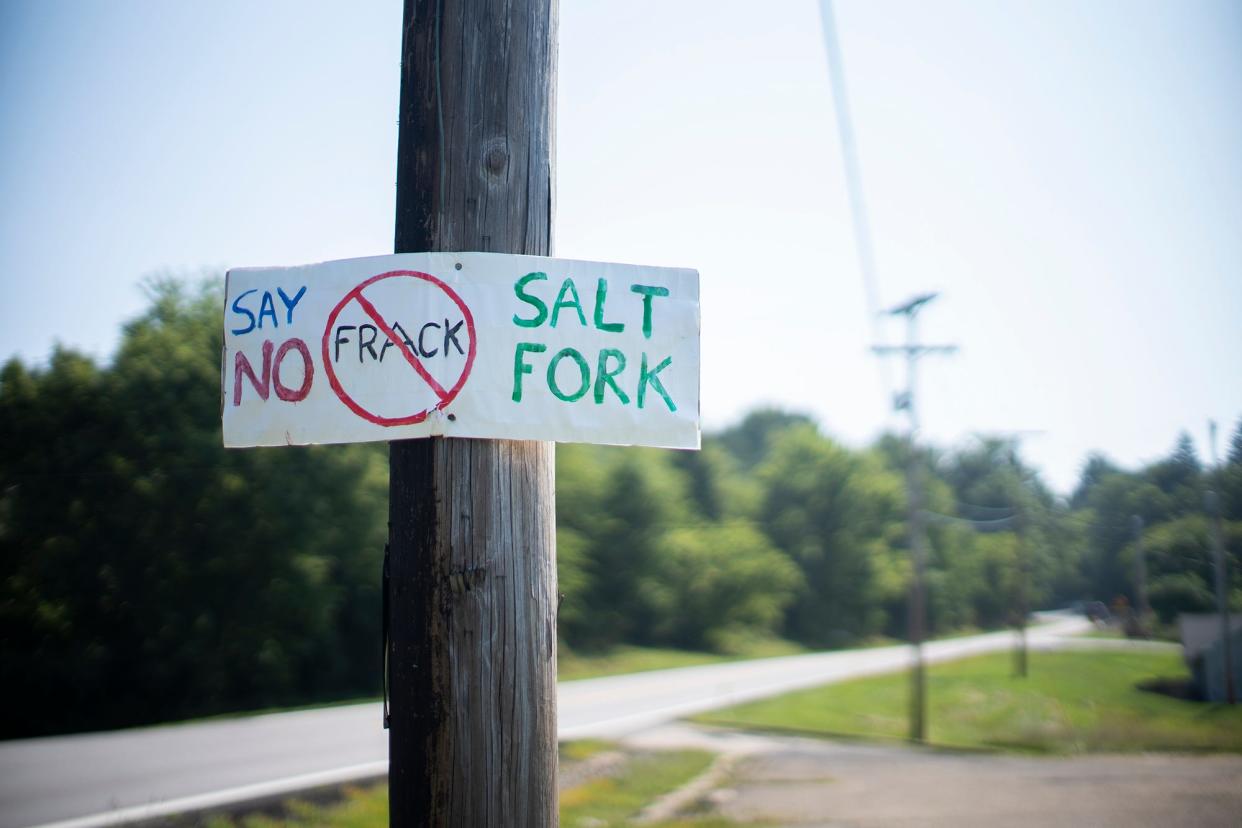
- Oops!Something went wrong.Please try again later.
Austin Warehime drove down a dusty road just outside Quaker City in eastern Ohio, gazing out at his step-grandparents' farmland. In the distance, a relative was mowing hay in a tractor, a backdrop of picturesque rolling hills behind them.
Yet the sound of the tractor was barely audible over what was right in front of him: a tangle of pipes and towers, one of which was loudly spewing methane gas. A fracking well.
Such sights are common across Southeast Ohio.
Also known as hydraulic fracturing, fracking is a process that uses pressurized water to extract oil from supplies of minerals thousands of feet below the Earth’s surface. Over the last 10 years, oil and gas companies have swept across the Ohio Valley region, striking deals with area residents — landowners can lease their land for companies to frack beneath it, and in return, they’ll receive a small part of the profit.
Now, the state wants in on these leases. Ohio lawmakers passed a law to permit fracking beneath state-owned lands — including several of Ohio’s state parks and wildlife areas.
The legislative groundwork to allow fracking beneath state-owned lands was laid over a decade ago. Yet fracking has drawn much scrutiny in recent years over concerns of pollution, and the risk of accidents and explosions. Public outcry against an initial 2011 law led then-Gov. John Kasich to change course. He didn’t appoint any members to a state commission that would have allowed oil and gas companies to apply for leases on state lands.
Through a series of recent laws and rules passed under the radar earlier this year, however, this commission has quietly become active again, and is now reviewing nomination forms to lease some state lands for fracking. Several of the forms ask the state to allow fracking beneath Salt Fork and Wolf Run state parks, located in Guernsey and Noble counties respectively. Valley Run and Zepernick Wildlife Areas have also been nominated for fracking, as have several stretches of state highways.
The Oil and Gas Land Management Commission started accepting nominations on May 30, and is set to decide whether to approve or deny these fracking nominations by the end of the year. Gov. Mike DeWine has pledged that none of these potential wells would cause any disruptions to visitors at state parks.
A growing number of locals are skeptical of his pledge.
Now, stakeholders are divided over whether the state can both preserve and profit off of its public lands.
"This is 3% of our land in Ohio that has been set aside for these parks and wildlife areas," said Cathy Cowan Becker, co-founder of grassroots environmental group Save Ohio Parks. "They're meant to be protected.”
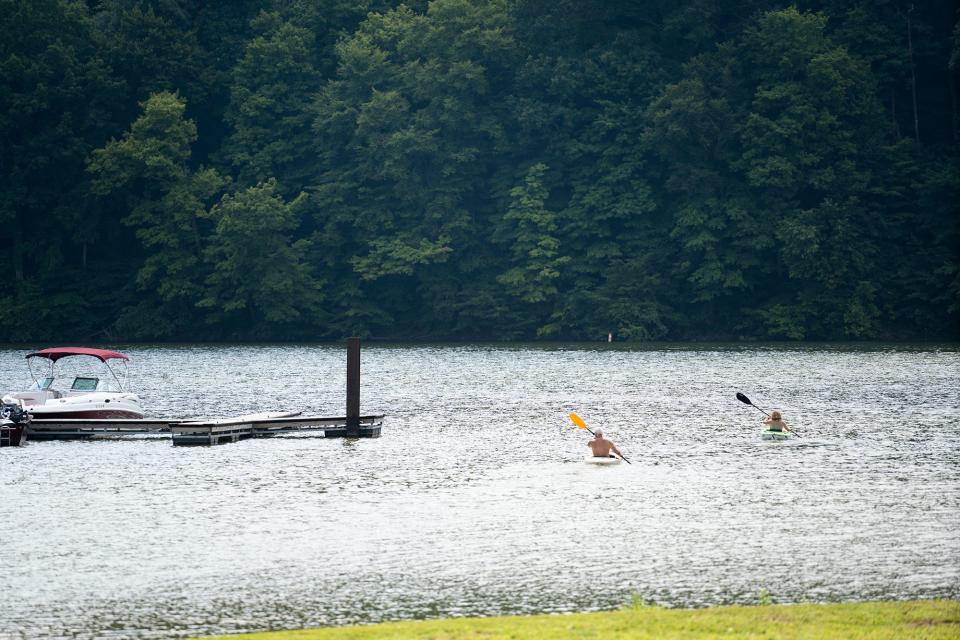
What would fracking look like in a state park?
Industry experts say oil and gas companies have long been hoping for an opportunity to frack beneath state lands.
"If they can somehow get underneath large parcels of land owned by a single entity, and somehow get the price for that to be a fraction of what they would pay on the open market to individual property owners, they're always looking to do that," said Ted Auch, Midwest program director for FracTracker Alliance. FracTracker collects data on fracking pipelines and pollution across the U.S.
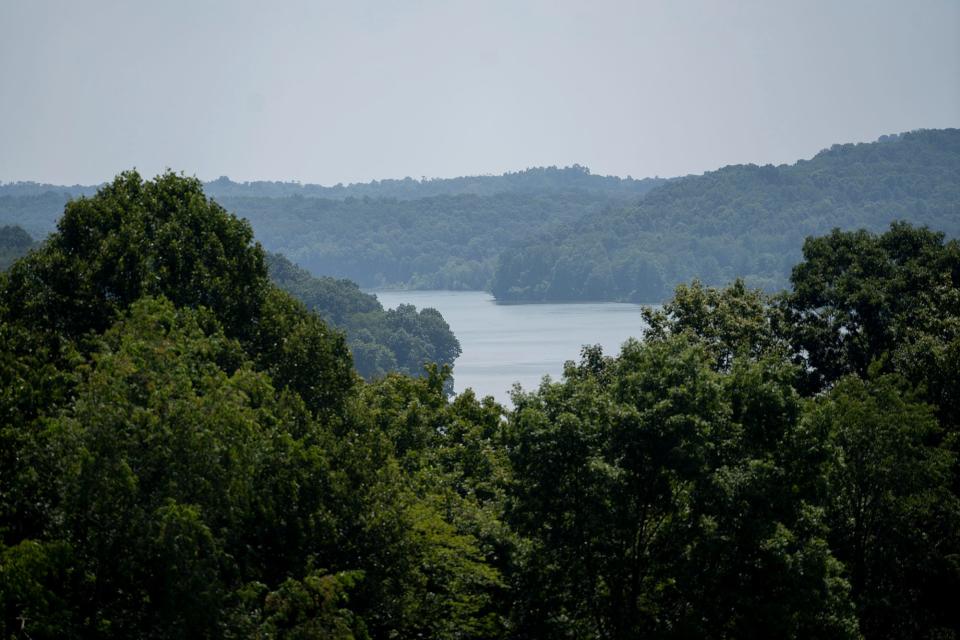
To avoid surface impacts on any state-owned lands, fracking on these lands would use horizontal drilling. The well pad, a five- to 10-acre plot of land holding the rig and other equipment, would be outside of the parks. Horizontal underground pipes would stretch one to three miles across from the well pad to the mineral deposits, and would then extend down into the shale.
Well pads are one of the main on-the-ground impacts caused by fracking. On the nomination forms submitted to the Oil and Gas Land Management Commission, all well pads are located outside of state-owned lands — though a few may be placed just 400 feet from park borders.
Oil and gas industry leaders maintain that, even if well pads and other infrastructure are just outside the park's borders, there won't be any impact to visitors in terms of surface disturbance or pollution. Because the process of fracking happens so far underground, there wouldn't be much activity above ground, and recent advancements have helped minimize the risk of accidents, said Rob Brundrett, president of the Ohio Oil and Gas Association.
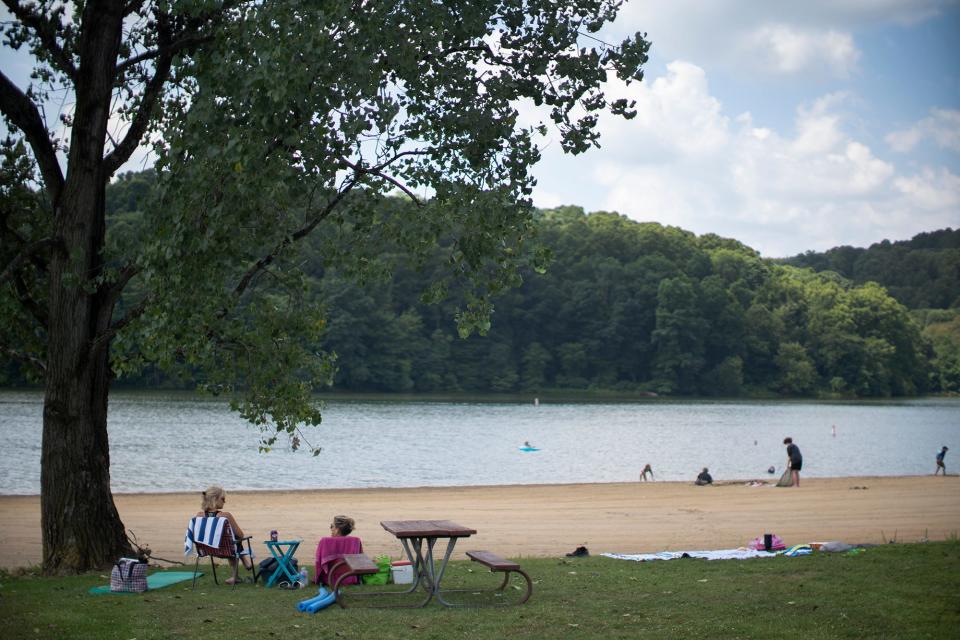
"The DeWine administration has been adamant, no surface disruptions. And so I think from the companies themselves, they understand that there's really no opportunity unless they can solve some of these problems on public property," he said.
The decision on whether to allow lease applications is up to the commission's four members: two of whom represent the oil and gas industry, one from the finance industry, and one representing conservation interests. If the nominations are approved, any party could then apply to lease the approved lands for fracking during an open bidding period.
From there, it would be up to state agencies to select the best bid and hammer out a lease agreement. For the parks and wildlife areas, this task would fall to the Ohio Department of Natural Resources. For lands beneath highways, the Ohio Department of Transportation makes the decision.
Spokesperson Andy Chow said ODNR "(plans) to advocate for stipulations to any possible lease agreement that provide more protections to our natural wonders, while ensuring the potential development of the state’s energy sources."
Potential impacts on parks
Many activists have pointed out that, despite DeWine's stance, ODNR wouldn't be legally bound to prevent any environmental impacts inside the parks.
"There's no executive order that says that," said Warehime, a Cincinnati-based environmental lawyer and Guernsey County native. "If Gov. DeWine leaves office, who knows what the next guy's gonna say?"
In a statement, Chow said that "additional addenda or conditions the (Oil and Gas Land Management Commission) may add to a particular nomination will be posted before bidding on a nomination begins."
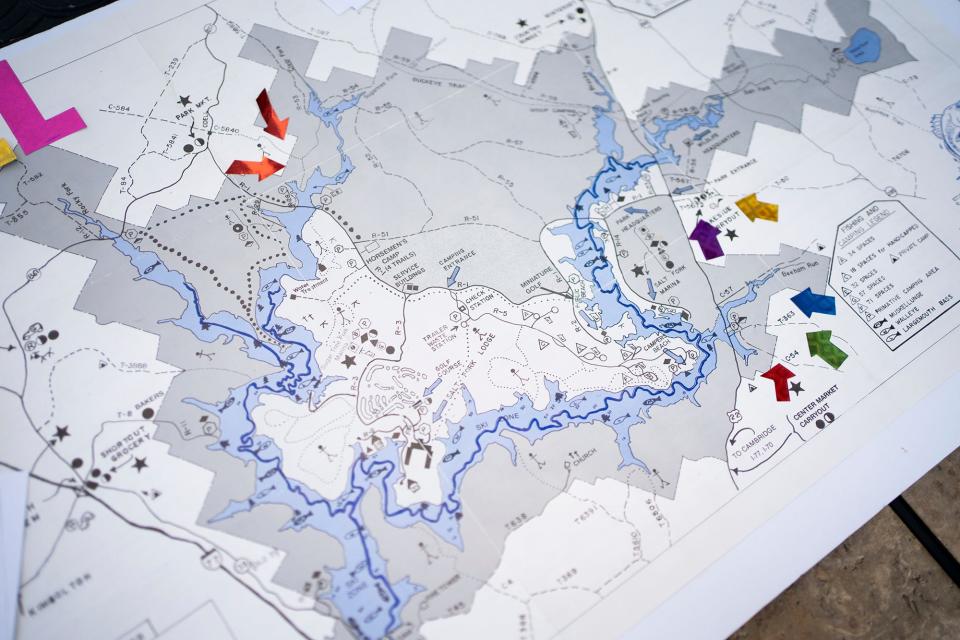
Warehime and other local activists emphasized that, even if fracking occurs outside of park boundaries, things like light, noise and air pollution can travel, potentially impacting tourism and wildlife. The process also uses several toxic chemicals to extract oil, many of which are "trade secrets" that are not disclosed to the public. Studies have tracked higher rates of asthma, cancer and other diseases in people living near fracking wells.
One of the biggest environmental concerns with fracking in state parks is water use. On average, fracking wells use anywhere from 1.5 million to 16 million gallons of water, according to the United States Geological Survey. While some sites have begun to recycle water to reduce their consumption, this amount of water is hard to come by — transporting it in via trucks can be extremely costly.
It has become common to use natural water sources for fracking, drawing water from lakes or streams near the well pads. Jim Milleson, president of the Ohio Valley Energy Association, said many oil and gas companies focus on drawing from regenerative water sources. The OVEA focuses on helping landowners strike equitable lease deals with gas companies, Milleson said.
"We have studies on the amount of water you can pull from a given area, and we try to stick to that 30-to-1 ratio — for every gallon you take, it needs to be replenished by 30," he said.
In both the Salt Fork and Wolf Run areas, the largest natural water sources are inside of the parks. The current nomination forms don't include details on where water for fracking would come from, or even what companies have submitted the nominations.
But environmentalists in the area are worried that companies could start drawing water from inside the parks' lakes. Laying pipelines that connect natural water sources to well pads often require the temporary clearing of a forest tract, according to Auch.
"You have a surplus amount of water in these lakes and streams, which is the way that unfortunately, we look at water in Ohio, especially Southeast Ohio," said Auch. "But what about drought years? Are we still gonna let these companies pump? ... I'm really worried about not only unfettered surface disturbance, but an unfettered access to the public good, which is water."
An uphill battle for climate activists
Terri Sabo stood in her front yard, looking out across the hills of Salt Fork. Sabo and her husband live within a mile of the park — and they've seen the local landscape shift with the rise of fracking.
“We can see well pads and flaring from our house, because we live on a ridge," she said. "And those are 14 miles away.”
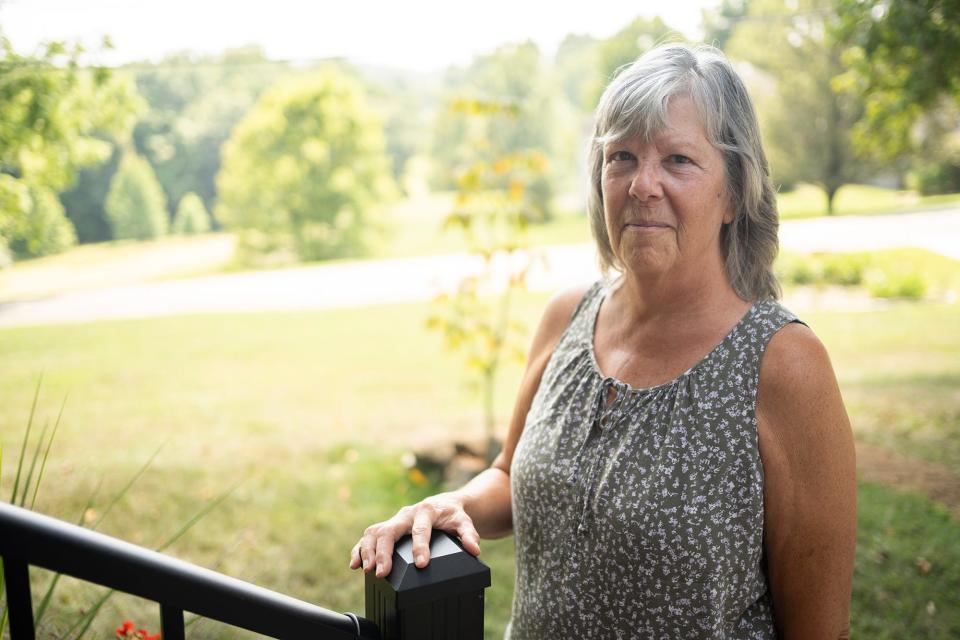
The Sabos, along with Becker, Warehime and other environmentalists with ties to eastern Ohio, have spent the past several months urging the Oil and Gas Land Management Commission to reject nominations for fracking beneath Salt Fork and Wolf Run. The risks of environmental harm, they insist, are greater than the reward of oil extraction.
"It's an industrial process, and it really has no place in a forested ecosystem, especially one that's designated as a state park," said Dr. Randi Pokladnik, a retired scientist and environmental activist.
Grassroots opposition to the proposals is growing, drawing bipartisan interest. Two former Ohio First Ladies — Hope Taft and Frances Strickland — have publicly come out in opposition to fracking in Salt Fork and Wolf Run, according to an Aug. 31 press release from Save Ohio Parks.
Yet these movements have struggled to gain ground. Very few locals are even aware that Salt Fork and Wolf Run could soon be fracked. And in a region whose economy was completely transformed by the fracking boom of the early 2010s, many are hesitant to openly rally against oil companies.
Several times this year, the Sabos have been approached by officials from oil company Encino Energy, asking if the couple was willing to lease their land for a well pad. Concerned by the potential for environmental impacts, they declined the offer.
"I just worry about the air quality, the light pollution, the water quality, the truck traffic — there's just so many things," Terri said of fracking. "They're selling our resources, never to be recovered."
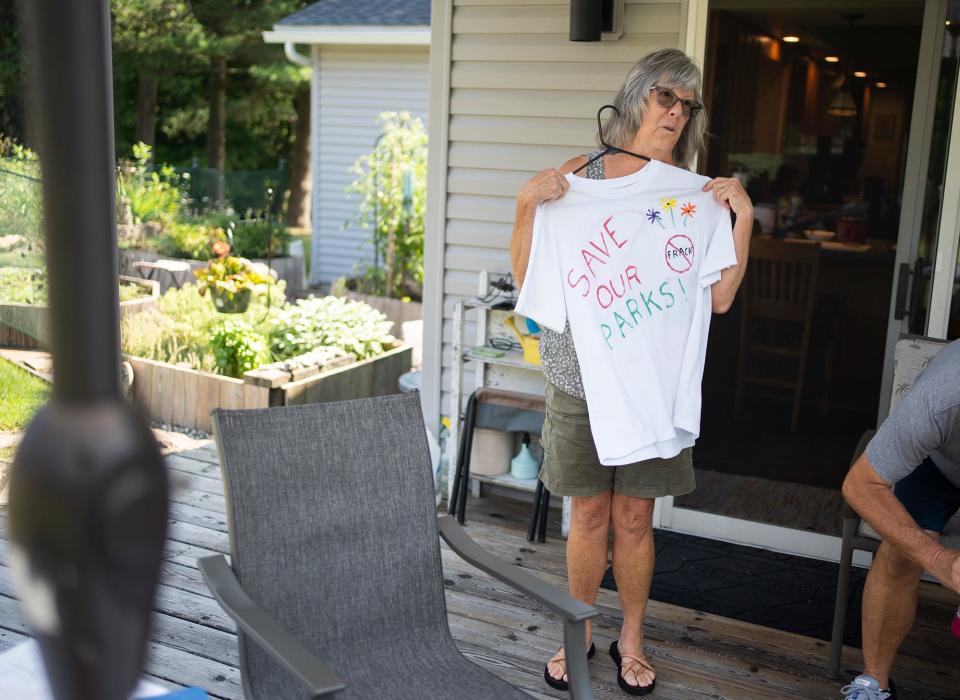
Encino spokesperson Jackie Stewart said the company takes "an industry-leading approach to environmental protection as well as worker and community safety, which is our highest priority. Should Encino participate in the state leasing process, we would execute our operations with this same rigorous approach to risk management and sustainability."
Southeast Ohio is a predominantly rural, historically low-income part of the state, and when residents are offered lucrative lease deals by oil companies, it can be hard to say no. Warehime said that many residents of the area are "generally supportive" of fracking, especially if they've made some money off of fracking leases themselves.
The financial incentive for landowners to lease to oil companies is something Warehime knows well. His step-grandparents, the Quaker City residents who leased their land for a well pad, originally took their lease deal to be able to pay for health care for a sick relative. On average, Milleson said his OVEA customers can make $207 per acre per month over a 20-year period that wells are typically operational.
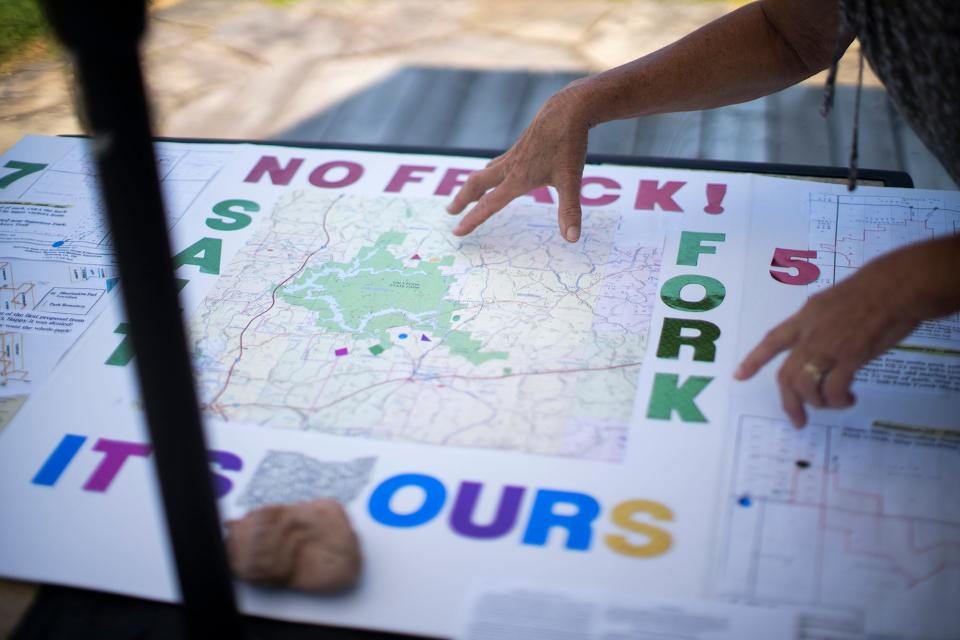
Warehime's family lease didn't come without sacrifice. The well pad sits directly across from their house on a key patch of farmland, and if an explosion were to happen, Warehime said oil company officials told his family it could destroy their house. When they tried to get a lawyer and ask the oil company to move the well to a different part of their property, their requests were denied. Ever since, the loud noise, bright lights and methane flares has kept his family up at night.
Warehime's step-grandparents didn't want to lose their countryside view, and part of their farmland, by taking on a lease, he said. But in this case, they had little choice but to take what they were offered.
"They're kind of stuck between a rock and a hard place," Warehime said. "Either they take good money on their own terms, or they take poor money and it's forced upon them."
Seeking a 'shot in the arm'
In the case of fracking beneath state parks, it's the state agencies like the Ohio Department of Natural Resources and the Ohio Department of Transportation that stand to benefit from oil leases.
The promise of revenue for the state is alluring — but only so long as the state ensures this revenue is funneled back into the communities in which fracking plays out, local officials say.
"I think when the oil and gas first hit Guernsey County, it was a boom, and it really was a shot in our arm that really helped," said Guernsey County Commissioner Skip Gardner. "But once it started to dissipate, we lost a lot of sales tax money, and that's how all counties run, is on sales tax."
The fracking boom has been a net positive for Guernsey County, Gardner and his fellow county commissioners agreed. But much of the profit from fracking hasn't gone directly back into the county, they said.
Despite the fact that there could be more fracking coming in, the commissioners weren't aware that the Oil and Gas Land Management Commission was considering leasing the land beneath Salt Fork until more than a month after the nomination forms opened. While the county commissioners remain optimistic that potential fracking won't impact the park or its visitors, they're urging the Ohio Department of Natural Resources to be transparent as it takes on such a high-stakes project.
"And I'm not talking about just the possible bad," said Commissioner Dave Wilson. "Let's talk about the good, let's talk about how they view the way that the drilling entities are handling this newfound opportunity."
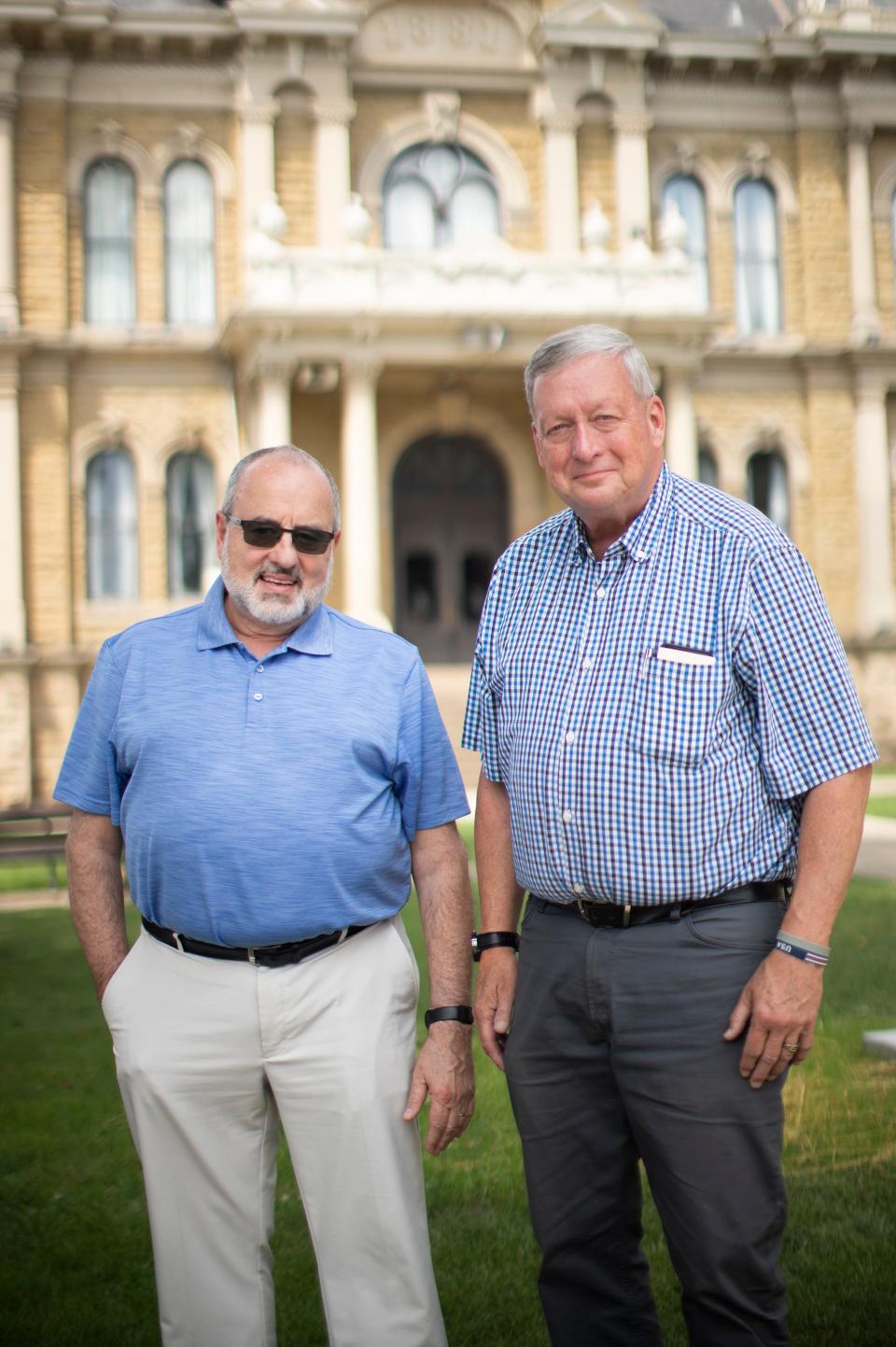
Still, there's no guarantee that funds generated from these leases would be funneled back into the communities being fracked. Milleson said that, while there are benefits to developing the resources beneath the parks, it's crucial for negotiators to understand the implications of a lease before signing over land rights.
"That's my fear of this," he said, "is that our commission and those who are negotiating this lease, are they really understanding the lease language and the lease process of how to fully develop that asset?”
The initial 2011 statute that allowed state land leasing set that state agencies can't collect more than 12.5% of the royalties from its leases. However, Chow said, "the statute does not preclude or limit other forms of payments or incentives and does not place any restrictions on the total revenues a state agency can receive."
"I'm not here to say that fracking is a binary, like should happen or should not happen," said Auch. "But at the very least, Ohio should be extracting more flesh from this industry, especially when it comes to drilling under our property."

Time is now ticking for the commission to decide on whether to open Salt Fork, Wolf Run, and other state lands for fracking leases — a process that will remain largely out of the hands of locals. Yet between the picturesque ridges and valleys of Guernsey County, some are beginning to have second thoughts, rethinking their visions of profit and public good.
For advocates like Warehime, the hope remains that these second thoughts could become a tipping point for the community.
"If people concerned about the environment are willing to listen to the nuanced issues that are going on in Southeast Ohio, I think there's coalitions that can be built here that could stop the fracking in state parks," he said.
LCarey@Dispatch.com
@LilyLCarey
This article originally appeared on The Columbus Dispatch: Fracking could begin soon under Ohio's state parks

